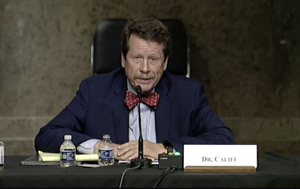Califf previews priorities if confirmed as FDA commissioner
 Biologics/ biosimilars/ vaccinesBiotechnologyDiagnostics/IVDsMedical DevicesNorth AmericaPharmaceuticalsRegulatory Intelligence/Policy
Biologics/ biosimilars/ vaccinesBiotechnologyDiagnostics/IVDsMedical DevicesNorth AmericaPharmaceuticalsRegulatory Intelligence/Policy Biologics/ biosimilars/ vaccinesBiotechnologyDiagnostics/IVDsMedical DevicesNorth AmericaPharmaceuticalsRegulatory Intelligence/Policy
Biologics/ biosimilars/ vaccinesBiotechnologyDiagnostics/IVDsMedical DevicesNorth AmericaPharmaceuticalsRegulatory Intelligence/Policy